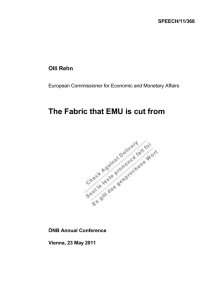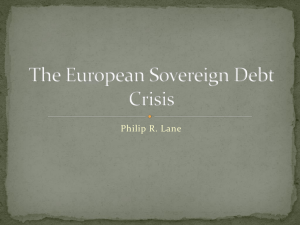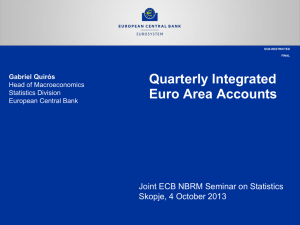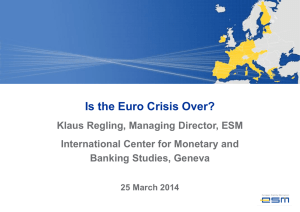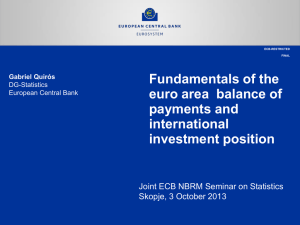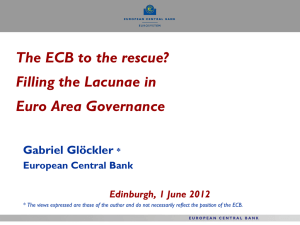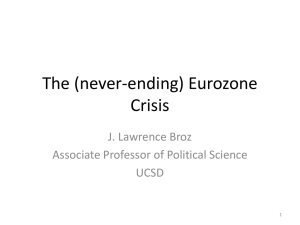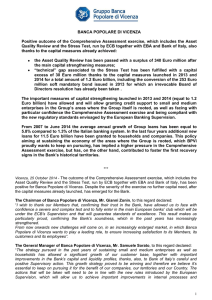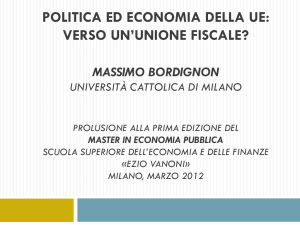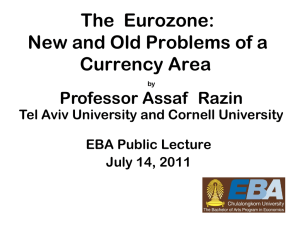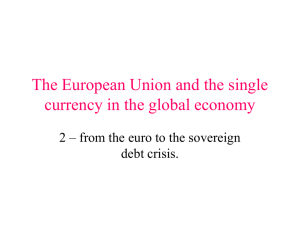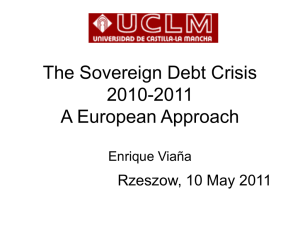debt crisis of euro area
advertisement
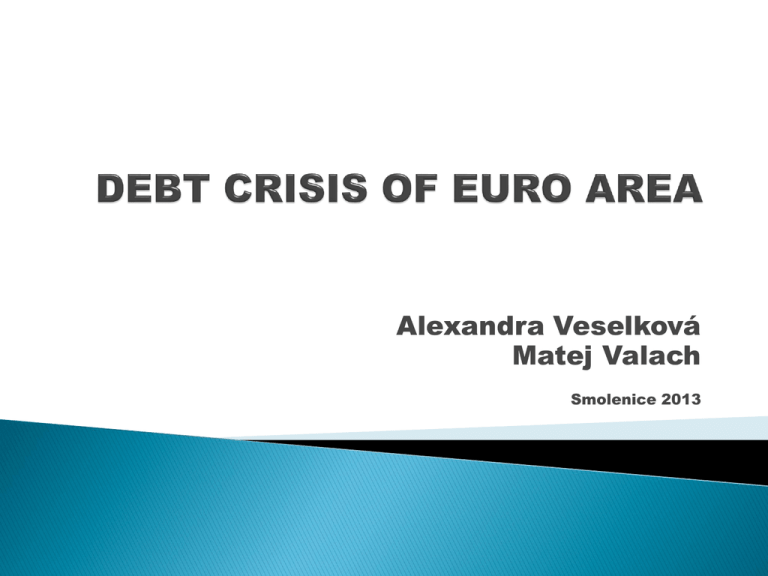
Alexandra Veselková Matej Valach Smolenice 2013 Global scale → high rate of synchronization of the World economy (high rate of liberalization of foreign trade, mobility of global capital, integration of financial markets, transnationalization, interdependency of the World economy) Decline of competitiveness of developed economies The biggest risks of future development of the World economy → fiscal sustainability, sustainability of external economic equilibrium, financial stability Not following criteria and their weak enforcement: incapability of Stability and Growth Pact (SGP) to keep budget deficits and deficits of state debt in euro area countries → state within euro area should not exceed limit of 60% GDP → 100% violate Greece, Spain, Portugal, Great Britain, France Responsibility of national governments with present authorities at the head of ECB → did not use tools like minimum reserves (MR) and control of growth of bank loans; different rate of MR was not used on different bank national markets (Spain, Ireland) and to increase MR on the markets with quick growth of loans In 2000 - 2008 the economic growth was based mainly on expansive monetary and fiscal policy Great amount of money flowed into economies High government expenditures led to increase of GDP, stimulation of Aggregate demand and to growth of debts of course To get rid of debts it is necessary for the country to rise taxes, or lower another expenses This means lowering disposable income of consumer and consequently reduction of consumption and aggregate demand If there is no consumption, sales area is diminishing, supply is going down Unemployment is growing and again incomes are lowered Currency integration proceeded at fast tempo Loan flowed over boarders in growing amounts Interest rates converged Euro area stimulated growth of trade "South wing countries„ grew fast First decade of euro created illusion, that it is functional and successful project Euro area was not an optimal currency area already at its birth and was not aiming to it → differences in competitiveness were remaining Capital flowed into economies that offered higher interests, but just as a price for higher risk (this risk creditors – mainly banks form the countries of the „core“ of the euro area – ignored the assumption „in the worst scenario there will be some help for more risky economies“ → euro area thus did not bring expected better allocation of capital Easy access to cheap loans stimulated quick growth of private and public expenditures → current account deficits Inflow of capital and low real interest rates in countries with higher inflation rate → overheating of these economies Some countries of the euro area did not use economic growth for consolidation of public finance (to lower structural debts) Rules for euro area were not followed SGP should be enough to enforce fiscal discipline, but solution for financial crises was not defined, or setup when helping governments that got into insolvency or exit from euro area In 2005 SGP was loosen (upon Germany and France) Political elites were not prepared for the crisis: opinion changes, minimizing the problems, buying time instead of real solution Because of reforms in labour market grew labour costs in Germany slower than elsewhere and it gained price competitiveness Gap in competitiveness between Germany and other countries in last decade strongly increased Zdroj: Eurostat Zdroj: Eurosta Zdroj: Eurostat Countries lived „beyond their means“ before the crisis – Greece in the long run Spain, Ireland operated relatively moderately, but 1) saving the banks 2) supporting the supply during the crisis 3) economic decline considerably worsen their fiscal situation Financing the public debt on the market became too expensive for some countries in some period (or impossible) → threat of debt spiral (amount of debt is out of control) Fiscal policy so became additional source of shocks and not their absorber Public finance of such country get into so bad state, that their consolidation gets priority from anti-cyclic (stabilization) function and this even helps recession There is the biggest saving in euro area ever Structural deficits are being reduced, but not debt Due to weak economic growth or recession there are more intense savings to fulfill the goals, but they are even though often not fulfilled Interest rates are close to zero Inflation is above 2 % ECB is buying bonds Bank union is being suggested, without which ECB has no control over monetary policy of the "South wing countries„ (despite effort of ECB to lower interest rates, in these countries interest rates went up) → effort to prevent existence of too many premiums for different banks due to their country of origin Concerning negative production gap, systematic risks in banking sector and from that risk premiums and chilling of loans there should be expansive monetary policy → but monetary policy has no longer enough space for supporting the economy with respect to low level of real interests and therefore is the attention paid to fiscal policy negative feedback among: 1) the vulnerable financial system, 2) stagnant economies 3) indebted public finances fiscal consolidation works with the cycle → slowdown of growth stabilization of the debt of some countries come up in a few years, on a high-level → economic slowdown increases the risk of debt spiral spin slow implementation of structural reforms in the South wing countries → structural differences between countries remain outflow of deposits from some South wing countries weakening political support for the euro project in France and Germany GDP has reached around pre-crisis levels in the South wing countries is found below and under the risk of further decline the main problem of the euro area → structural heterogeneity, inadequate institutional arrangements and inadequate functioning (and respect) of the rules single monetary policy deepens the differences among the countries of the south wing and the core euro area Euro area crisis does not lie in the possibility of the exit of some countries, but in the persistent the method of its (dis)functioning The largest EU project with the ambition to significantly accelerate its growth to a level ensuring global competitiveness did not bring growth a threat of the euro area collapse remains, with potentially disastrous consequences for all Given the state of the economy (negative output gap) the character of consolidation should be: gradual → credible reform of the pension system now spread consolidation in the future, reliable debt brake boost confidence Growth oriented in long run → for example, focus more on reducing costs particularly benefits or advantages (except of those for the lower income groups) and consumption of the state (rather close institutions and fire workers than chill costs in general, if raise taxes then specially property and consumption ones (so-called fiscal devaluation to increase competitiveness) acceptable Thank you for your attention alexandra.veselkova@euba.sk matej.valach@euba.sk Príspevok je výstupom vedeckého projektu VEGA č. 1/0570/11 „Spotreba a kvalita života domácností SR vo väzbe na ich spotrebiteľské rozhodovania v európskom kontexte“


